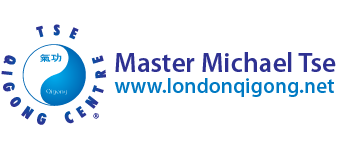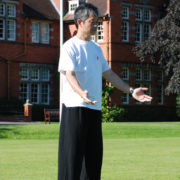Grandmaster Tse’s Qìgōng Dāo 295
Levels of Qì Development – Part 4
Once you start to find the location of the main acupuncture points you will start to find out more. Over the body, there are 36 major acupuncture points. Remember that some of the points come in pairs, so if you find the left Láogōng 劳宫穴, then you will also find the right Láogōng point, but this only counts as one, not two of the 36 major points. As your Qì develops you will slowly find out the more points. You also need to find the most important acupuncture point, and this is not the Dāntián 丹田. You should be able to find the Dāntián, but the Dāntián is not an acupuncture point. There are a lot of points around it like the Qìhǎi 氣海穴, Mìngmén 命門穴, Guānyuán 關元穴, Huìyīn 會陰穴, etc. The most important acupuncture point is the Bǎihuì 百會穴. Once the Bǎihuì is open, then the rest of the acupuncture points will be open. We need to be able to find the location of the points with our Qì, the more Qì we have the easier it is, then as soon as we relax, then we can feel the points, we can even feel them when we are resting.
The next level is feeling the Jīngluò 經絡- the channels. The most obvious of the Jīngluò is the Rèn Mài 任脉 and the Dū Mài 督脉. However, if we can feel the location of the Láogōng, Hégǔ 合谷穴, Qìhǎi, Huántiào 環跳穴, Yǒngquán 涌泉穴 and even the Bǎihuì, then we should be able to feel the Rèn Mài and Dū Mài.





Leave a Reply
Want to join the discussion?Feel free to contribute!